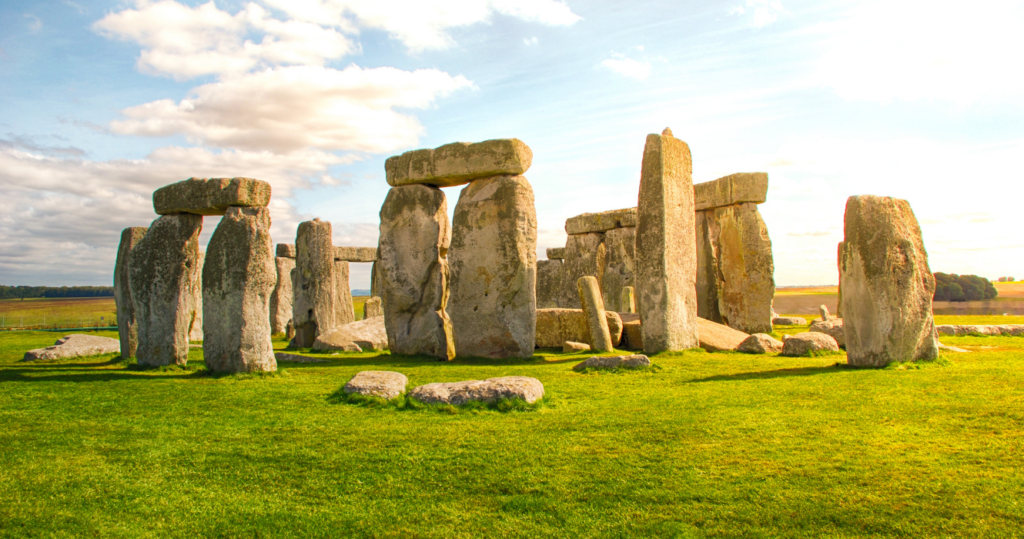As the sun reaches its highest point in the sky and the day stretches its luminous arms, we celebrate the enchanting phenomenon known as the summer solstice. Occurring between June 20th and 22nd in the Northern Hemisphere, and December 20th and 23rd in the Southern Hemisphere, the summer solstice marks the longest day of the year and heralds the arrival of summer. This celestial event holds immense cultural, spiritual, and natural significance, inviting us to embrace the radiant energy and embrace the wonders of the season.
Astronomical Wonder:
At its core, the summer solstice is a captivating astronomical event. It signifies the moment when the Earth’s axial tilt is most inclined towards the sun, resulting in the longest duration of daylight. During this time, the sun reaches its highest point in the sky, casting its warm golden rays upon the world below. The mesmerizing interplay between light and shadow creates a breathtaking visual spectacle, offering photographers and nature enthusiasts a splendid opportunity to capture the ethereal beauty of this celestial dance.
Cultural and Spiritual Significance:
Across cultures and civilizations, the summer solstice has held deep cultural and spiritual significance for millennia. Ancient civilizations built stone monuments like Stonehenge and Machu Picchu to align with the solstice, symbolizing a connection between humanity, nature, and the cosmos. Many festivals and rituals, such as Midsummer celebrations, Pagan rituals, and Native American ceremonies, have centered around this event. These traditions honor the sun’s life-giving energy, celebrate the abundance of nature, and pay homage to the cycles of renewal and growth.
Celebrating Nature and Vitality:
The summer solstice invites us to reconnect with nature and revel in the abundance of life. It is a time when the Earth’s bounty flourishes, with vibrant flowers blooming, crops ripening, and the animal kingdom buzzing with vitality. The extended daylight hours provide an opportunity for outdoor activities, such as picnics, hikes, and beach outings, allowing us to immerse ourselves in the natural splendor that surrounds us. It is a season of joy, laughter, and a celebration of life itself.
Personal Reflection and Renewal During the Summer Solstice:

Beyond the external festivities, the summer solstice encourages personal reflection and renewal. It is a time to pause, bask in the warmth of the sun, and reconnect with our inner light. As the world thrives with energy, we can use this time to set intentions, embrace personal growth, and release what no longer serves us. The solstice serves as a gentle reminder to nurture our well-being, aligning our inner rhythms with the natural world around us.
Illuminating the Summer Solstice in Pop Culture
The summer solstice, with its vibrant energy and celestial significance, has captured the imagination of artists, musicians, and filmmakers in popular culture. This astronomical phenomenon, marking the longest day of the year, serves as a source of inspiration and symbolism in various forms of artistic expression. From music to literature and cinema, the summer solstice has left an indelible mark on the creative landscape, shaping narratives and evoking emotions. Let’s explore how the summer solstice has found its place in pop culture.
Songs of the Summer Solstice:
Music has long embraced the spirit of the summer solstice, with numerous songs capturing its essence. From the ethereal melodies of Enya’s “Longest Day” to the folk-infused tunes of Joni Mitchell’s “The Hissing of Summer Lawns,” artists have used music to convey the magic and transformative power of this celestial event. These songs often explore themes of renewal, introspection, and the fleeting nature of time, reflecting the introspective and celebratory aspects of the solstice.
Literature and Mythology:
The summer solstice has woven its way into the fabric of literary works, both modern and ancient. From Shakespeare’s “A Midsummer Night’s Dream,” which intertwines love, magic, and mischief during the midsummer celebrations, to contemporary novels like Sarah Jio’s “The Last Camellia,” where the Solstice serves as a backdrop for personal transformation, literature has embraced the solstice as a time of enchantment and heightened emotions. Mythologies from various cultures, such as the ancient Greek celebration of the god Apollo on the summer solstice, have also contributed to its enduring presence in storytelling.
Cinematic Symbolism:
In cinema, the summer solstice often serves as a metaphorical device, representing change, self-discovery, or the turning point of a narrative. Films like “A Midsummer Night’s Dream” and “The Secret Life of Walter Mitty” use the solstice as a catalyst for adventure and personal growth. The prolonged daylight hours and the vibrant atmosphere of the season lend themselves to visually stunning cinematography, amplifying the emotions and experiences depicted on screen.
Festivals and Cultural Events:
The summer solstice has inspired a multitude of festivals and cultural events worldwide, each infused with its artistic expressions. The Glastonbury Festival in the UK, for example, celebrates the solstice with music, art installations, and spiritual practices. The International Day of Yoga observed on the solstice, emphasizes the unity of body, mind, and spirit through the practice of yoga, embodying the essence of the solstice’s transformative power.


